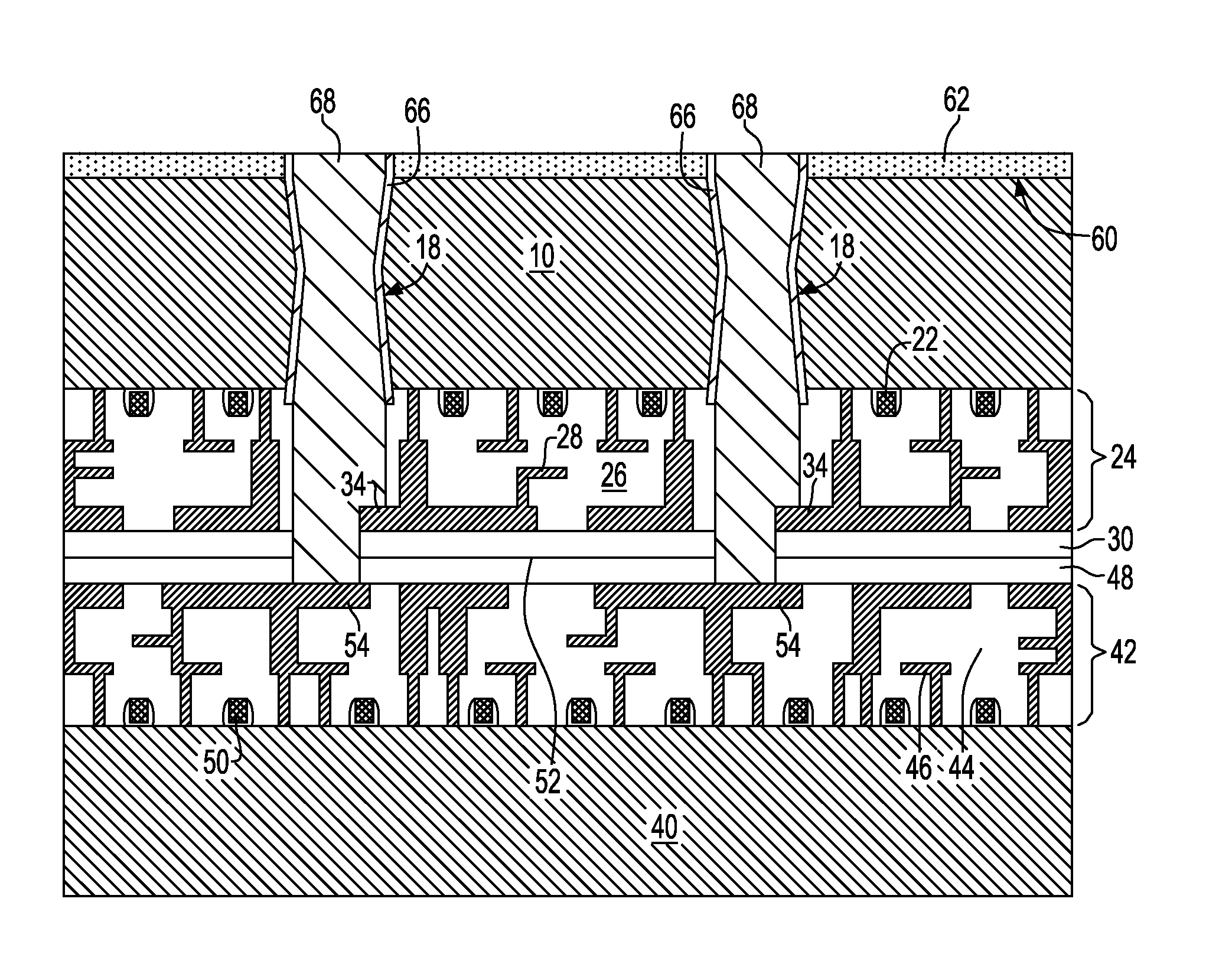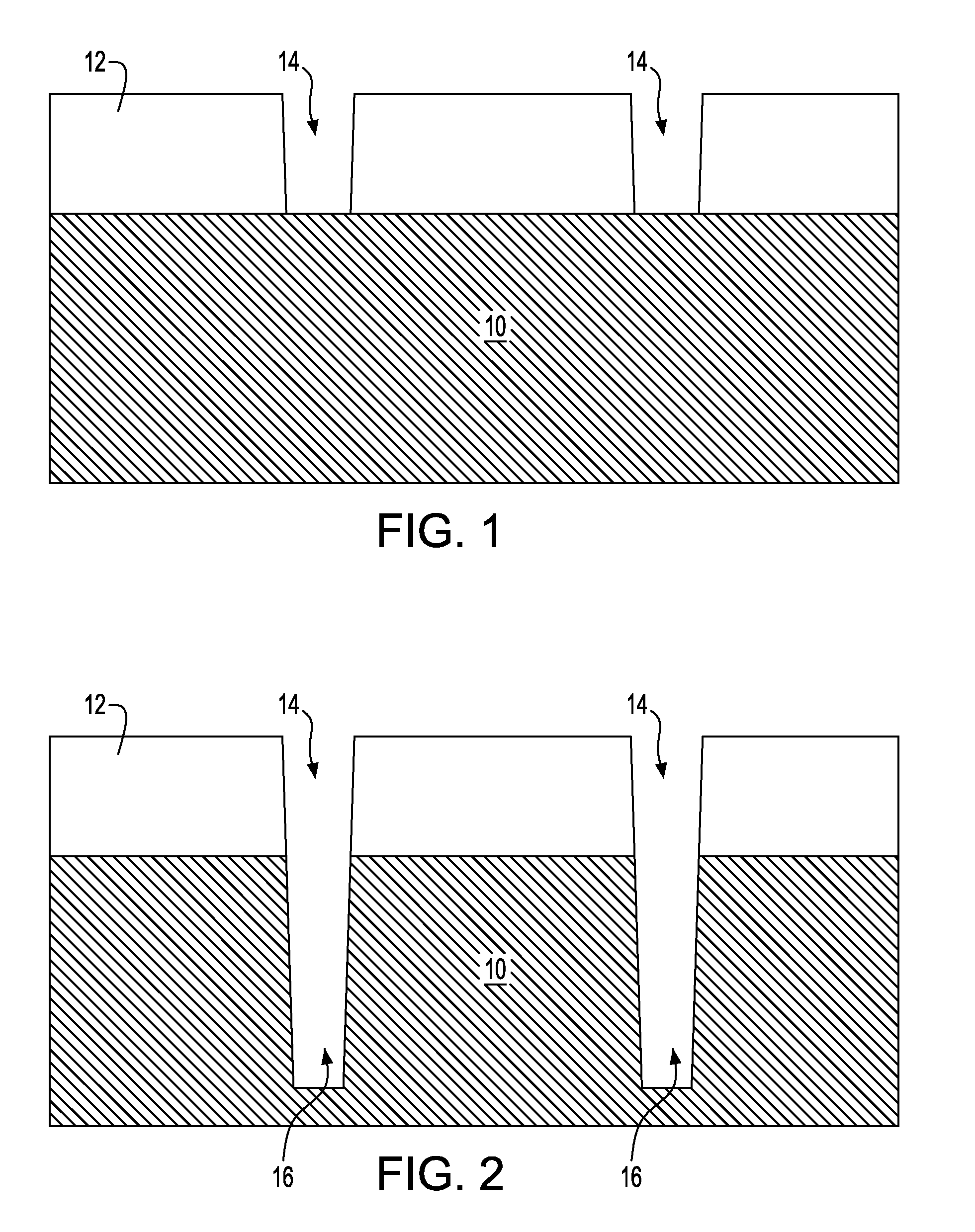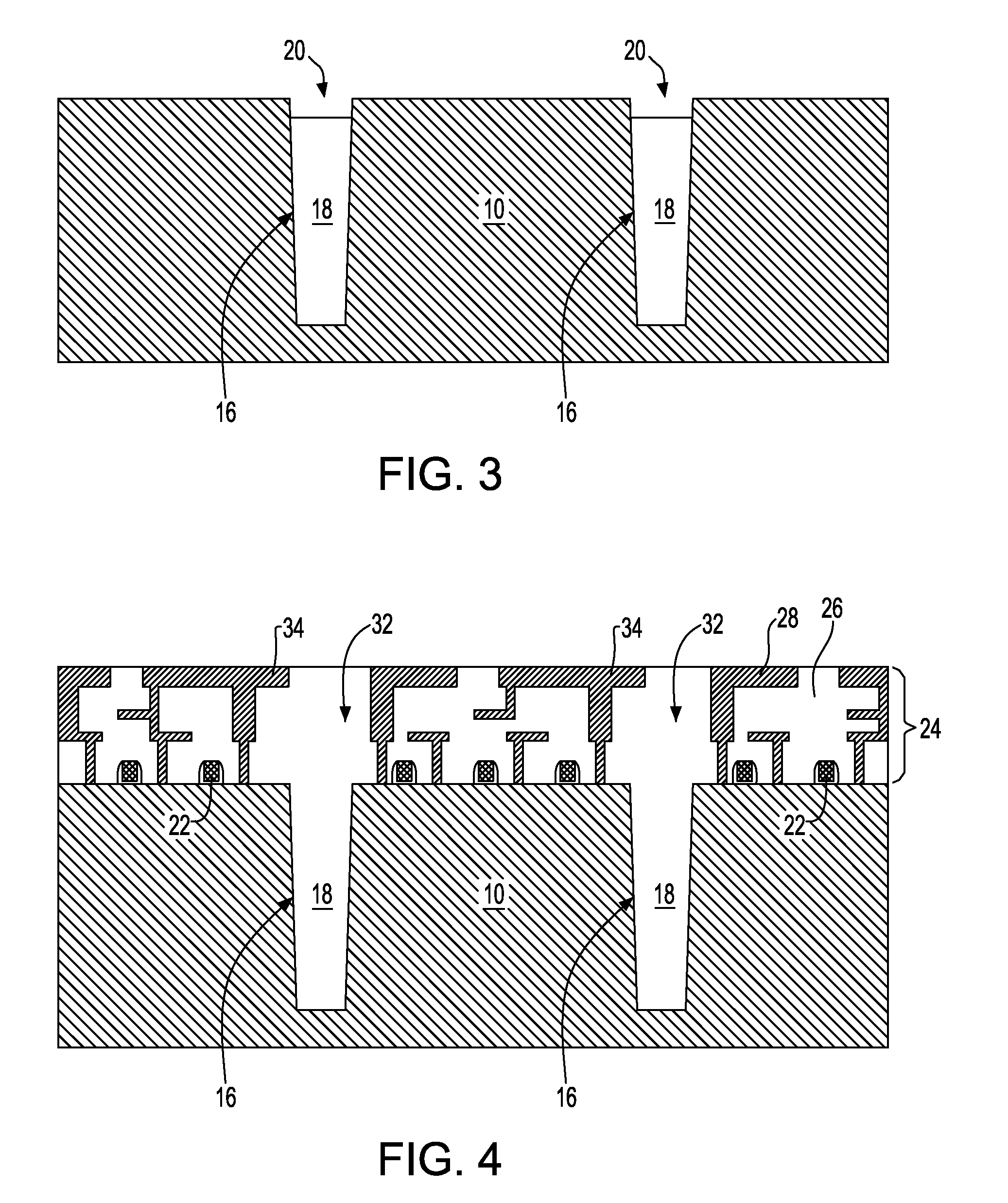Method of making 3D integrated circuits
a technology of integrated circuits and components, applied in the direction of semiconductor devices, semiconductor/solid-state device details, electrical apparatus, etc., can solve the problems of minimum size needed to make these components, physical limits of the density that can be achieved in two dimensions, and the requirement of more complex designs
- Summary
- Abstract
- Description
- Claims
- Application Information
AI Technical Summary
Benefits of technology
Problems solved by technology
Method used
Image
Examples
Embodiment Construction
[0033]When semiconductor chips or integrated circuits (hereafter referred to as just “integrated circuits”) are joined to form a 3D structure, it is necessary to form vias through the semiconductor wafer to make the various connections between integrated circuits. These through silicon vias may be made on each integrated circuit before the integrated circuits are joined in a so-called through-silicon-first process. Alternatively, these through silicon vias may be made after the integrated circuits are joined in a so-called through-silicon-last process. The through-silicon-last process has an advantage of better connectivity over through-silicon-first but the through-silicon-last process also increases the difficulty in aligning through silicon vias to top and bottom semiconductor wafers simultaneously. The present invention relates to an improved process and structure for forming through silicon vias in a through-silicon-last process.
[0034]Referring now to the drawings in more detai...
PUM
 Login to View More
Login to View More Abstract
Description
Claims
Application Information
 Login to View More
Login to View More - R&D
- Intellectual Property
- Life Sciences
- Materials
- Tech Scout
- Unparalleled Data Quality
- Higher Quality Content
- 60% Fewer Hallucinations
Browse by: Latest US Patents, China's latest patents, Technical Efficacy Thesaurus, Application Domain, Technology Topic, Popular Technical Reports.
© 2025 PatSnap. All rights reserved.Legal|Privacy policy|Modern Slavery Act Transparency Statement|Sitemap|About US| Contact US: help@patsnap.com



